Link
ICYMI: after ten years, I've finally migrated this blog off of Tumblr and will now be posting [semi-]regularly on my new blog. You can read more about it here or subscribe via RSS here. Thanks for following along.
(Though no longer updated, I'm keeping this Tumblr to keep the archive — nearly 4000 posts — online.)
5 notes
·
View notes
Text
Conan, Late Night Talk Shows, and Multi-platform comedy
1. Apartment 103

My college roommates and I were close. There were four of us — Ryan, Eric, Dustin, and me — and during the two years we lived in Apartment 103, we did everything together. We ate dinner together, around the table, like a family. We bought a Christmas tree together and made stockings for each other. We went to movies and watched every season of The Wire and Dexter. That apartment was the first place outside of my childhood house that felt like home.
It was the end of the semester and Ryan and Dustin had already gone home for the holidays; only Eric and I were left. He had made eggnog earlier in the day (as you do) and at 11:30pm, we sat in front of the television to watch Conan O'Brien's final night as host of The Tonight Show. I had just started getting into late night talk shows and was obsessed with the Tonight Show debacle. Here’s a quick refresher: in 2004, Jay Leno announced he was retiring from The Tonight Show and handing the show over to Conan O'Brien, then the lost of Late Night. At the beginning of 2009, Conan took over and the ratings dropped. NBC, in a panic, didn't want to give Conan the time to find his footing, and after a mere nine months, announced they were moving the Tonight Show back a half hour and giving Leno a new show at his old time. Conan quit and the network gave Leno his old show back. In the ten years since, Leno retired again, and every other talk show got a new host. Conan found a new home on TBS where he's been chugging away, doing his thing, quietly becoming the longest running talk show host of the current era.
Conan was never my favorite host — Letterman always held that spot for me, and now it’s Stephen Colbert of the current lineup 1 — but I always found him the most interesting of the bunch. Certainly more interesting than Leno and Fallon, and I was sad to see him lose the show2. Watching that final show with Eric — the images of Conan on The Tonight Show set, playing guitar with Max Weinberg and Will Ferrell as the credits rolled — is one of my strongest memories of late night talk shows, and certainly a highlight from Apartment 103.
2. “We’re Trying to be Anarchists”

Late last year, Conan announced that his now almost decade old TBS show would move to a half-hour format. The change would allow him to try new things on the show while also expanding his popular digital presence. Over the last few months, while the show was on hiatus, Conan launched a podcast, went on tour, and announced a new website that will archive every episode of Conan's shows. The shorter show would allow Conan to do more of what he does well — the travel shows and web exclusives like Clueless Gamer have proven surprisingly successful. By reducing the run-time for his TBS show, he'd have more time to devote to these extracurricular experiments while also easily playing with what the show itself can be.
On the new Conan, the desk is gone, the suits are gone, the band is gone. The set has been rebuilt, now just a small stage that can be reconfigured depending on what they are doing. Andy Richter is still there on the side of the stage. And Conan is still Conan. In the first few episodes I watched, the show felt largely the same, just shorter. As Rob Harvilla wrote for The Ringer, it was "addition by subtraction". The show obviously looked new and everything felt looser but the structure was still there: a monologue, a sketch or prerecorded bit, and an interview.
No show knows what it is in the first episode; or even the first year. The mistake NBC made in 2009 was jumping the gun, not giving Conan the time and space he needed to settle in and make the show his. It's hard to remember now, but Colbert's first year on the Late Show was rocky; with constant rumors that CBS wanted to swap his timeslot with James Cordon. And of course when Conan took over for Letterman back in 1993, he was rumored to be on a week-to-week contract. We shouldn't judge the new show by one week of episodes but it feels underwhelming after months of hearing how the new run-time would allow the show to be more experimental. Perhaps they are still easing their way into it, perhaps they still aren't sure what they can do. But for this new show to be truly exciting, it needs to get weirder. Conan needs to lean into what makes Conan Conan. There's still a lot of potential here.
Every time a new host takes over a franchise, there is a chance to mix up the standard talk show format popularized by Johnny Carson — there’s the monologue, a desk bit or a skit, two guests or three guests, and a musical act or stand up set — but each reincarnation is largely more of the same. Sure, Colbert made the monologue his own, where they often clock in well over ten minutes. Seth Meyers performs his monologue behind the desk. James Corden and Jimmy Fallon focus more on games and viral-style videos but it’s still just a white guy in a suit sitting behind a desk telling jokes and talking to people. It's a design problem, really: how do you work within the constraints of the format while making something your own? “We’re trying to be anarchists, but I’m trying to be a good boy and do a good job for the network,” Conan told Dave Itzoff of The New York Times. What he’s engaged in now, he said, “is this gradual progression toward me making the job fit me more — what do I like?”
That’s the tension with late night talk shows — especially with established francises like Tonight or Late Night: how do you honor the form that's been honed down over the last three decades while creating something new. Conan, perhaps more than any other late night host, has pushed himself up against that dominant form to question what else it could be. Sometimes, like Colbert or Seth Meyers, you find ways to work within in the system. But for Conan, the best way forward, I think, is to throw away that tradition and making something wholly his own. With TBS, he found a partner that gives him the space (and time) to try new things and make the show more like him. But the other, more important, question is: how central is the show to Conan's new output.
3. Building Your Own Printing Press
Ten years ago, around the same time I was watching the final episodes of Conan's Tonight Show with Eric, I started to get interesting in media distribution. The iPad would come out a few months later and this was when the first paywalls were being erected around newspaper websites. As someone who was always publishing little things online, I was excited by the potential and increasingly low-bar to entry. I wrote an essay for the now-defunct blog I kept through college on these changes and wondered out loud whether Conan even needed a new network. The essay — titled “Building Your Own Printing Press” — is no longer online but used the A.J. Liebling’s popular aphorism, “Freedom of the press is only free for those to own a printing press” as my starting point. The internet, I argued, gave everyone their own printing press. Conan was my prime example. Here's the key paragraph:
Under his exit contract with NBC, Conan O’Brien is unable to join another network until after September 1. So what will he do until then? Mr. O’Brien finds himself with a lot of free time and a lot of cash which make for the terrific combination to fully embrace independent media. It would be extremely easy for Conan to launch a new show without any network, contract, and deals and it could be all online, the way his fans watch him anyway. He would get to do his show, the way he wants to do it and not have to worry about networks giving him a hard time. The way we are consuming our media is changing and it’s about time the distribution caught up.
That was in 2009 — I was an overly optimistic (and arrogant) college student — and I realize now how much harder that would have been a decade ago. But now, in 2019, it is possible. YouTube stars are a thing. Instagram influencers is a term we now say without flinching. And it's exactly what Conan is now doing. Conan and TBS have entered a deeper partnership and are careful to continually point out the "show" isn't the only part of that partnership. There's already a podcast and a recently finished tour and I imagine we can expect more of that. Under the new contract, Conan can record as much as he wants each day and only owes TBS a half-hour. The rest can go online, or in any other place it fits. The format I wished for ten years ago probably wasn't financially possible then but it certainly is now.
This raises the question: how important is the TBS show to this new multi-platform comedy empire (ugh)? If anything, the show has been reduced to just another spoke in the wheel. By devoting less energy specifically to the show, each component can shift more freely. It’s here that Conan is truly subverting the late night form.
This is what I couldn’t quite reconcile ten years ago: Conan is on TV but his fans aren’t watching TV. The late night talk show is an archaic format; a relic from another era. Appointment viewing isn’t how people watch television anymore. (Think about how many times Netflix has tried to get into this area. So far they’ve been unable to crack it because it goes against Netflix’s whole model.) These shows are increasingly being watching in bits and pieces on YouTube the next morning. I’ve never seen an entire episode of Late Night with Seth Meyers but I’ve watched every single one of his A Closer Look segments.
Instead of prioritizing the show, Conan gives everything — the show, YouTube, his podcast — equal weight. It’s appealing to both sides of the generational divide, both packaged for TV and distributed across the web. You can watch it as a traditional talk show or online in short clips. While late night viewership decrease on television, they are increasing online. Much like newspapers and magazines struggled to get their content online in the early days of the web, so to are television networks still figuring out how to go digital. For many of these other shows, segments are clipped for YouTube or there’s a separate team making original content for online venues (that often feels like it’s separate from the show.) The other networks and hosts can take a cue from Conan and TBS, fully integrating the two, giving equal weight to both sides. As Conan said in another interview, perhaps in five years people won’t even notice that the “show” — in the traditional sense that we think about it now — is completely gone. Under this new model, it’s not impossible that ever-so-slowly, everything moves online.
Content-wise, Conan will find his footing within the new show. These first few weeks are testing the waters, being a beginner all over again. But it’s important to not overlook how much he’s already trying something new. This openness to different media platforms is, I think, the future of the genre. At least, it’s the future I wanted when I was sitting there in Apartment 103. I haven’t sat down at 11:30 to watch The Tonight Show since.
1. I’d also put Dick Cavett on my list right along Letterman, but his show never felt connected to the big four: Tonight, Late Night, Late Show, and Late Late Show. It always seemed like he always was doing his own thing. ↩
2. I’ve long held a theory about the Tonight Show. Letterman famously wanted it in the nineties after Carson retired — and Carson supposedly saw Letterman as his rightful heir — but the show went to frequent guest host Jay Leno. When Leno retired again in 2013, Jimmy Fallon took it over and is the current host. The Tonight Show is a brand name — that’s the popular show. It has to be generic, inoffensive, appeal to the most people. Letterman wouldn’t have been good on Tonight — he’s too smart and too weird. Same with Conan. Leno and Fallon and can do that. They are less interesting, better at appealing to the widest audience possible. ↩
#conan o'brien#late night talk shows#comedy#conan#stephen colbert#jay leno#jimmy fallon#seth meyers#the tonight show#media#media distribution#technology#television
3 notes
·
View notes
Text
Mark Minkjan on Failed Architecture, the state of design criticism, and what it means to be an urban geographer

This week on Scratching the Surface — my podcast about design criticism and practice — I’m joined by the an urban and architectural geographer Mark Minkjan. Mark is Editor-in-Chief at Failed Architecture and produces the Failed Architecture Podcast. He is also part of Non-fiction, office for cultural innovation, and has written for numerous publications including VICE, The Guardian and The Architectural Review.
I stumbled upon Failed Architecture about a year ago and immediately loved what they were doing. As they describe themselves:
Failed Architecture reconnects architecture with the real world. By opening up new perspectives on the built environment, we seek to explore the meaning of architecture in contemporary society. Since 2011, we have been providing an inclusive platform for critical urban discourse, fueled by unconventional narratives from an international network of contributors.
In many ways, what Failed Architecture is doing is very similar to my own goals with Scratching the Surface: they are creating a new type of dialogue within and around architecture.
In our conversation, Mark and I talk about how he got interested in architecture and how he started writing, as well as the origins and goals for Failed Architecture. We also talk about the state of design criticism and the role of the critic within these professions.
Failed Architecture follows in the tradition of many other independent publications (both print and digital) that I’ve talked to over the last few years and it’s these type of publishers — Failed Architecture, The Real Review, Bricks from the Kiln, Flat Out — that have me the most excited about the future of design writing. If you aren’t subscribed to any or all of these, I highly recommend it.
I hope you enjoy this one as much I did!
You can listen to the episode here, or on iTunes, Google Play, Spotify, and Soundcloud. Memberships are available for $5/month or $50/year if you want to support the show. And if you like it, please consider leaving a review on iTunes.
#scratching the surface#interview#mark minkjan#failed architecture#design criticism#architecture#writing
2 notes
·
View notes
Text
Nancy Skolos and Tom Wedell on Cranbrook and RISD, how design education has changed and the balance between history and innovation

This week on Scratching the Surface — my podcast about design criticism and practice — I have a wide ranging conversation with Nancy Skolos and Tom Wedell. They operate Skolos+Wedell where they are interested in demising the boundaries between graphic design and photography through collaged three-dimensional images influenced by painting, technology, and architecture and are long-time faculty members at RISD.
Over the last two years, I've talked to quite a few RISD faculty and alumni and it feels like Nancy and Tom have been mentioned in nearly every one of those episodes. Their influence, teaching, and thinking is vast and has had a profound impact on the community there. So I was especially interested in talking to them about how they started teaching but also how teaching (and design education more generally) has evolved for them over their near three-decade career.
This leads to a fascinating conversation about the balance between history and the new; how to teach history but not be beholden to it. Nancy and Tom met while they were at Cranbrook — Tom a graduate photography student and Nancy and undergraduate graphic design student — where innovation was encouraged but they were surrounded by a deep well of design history (the Saarinens, the Eames, etc.). This early education has influenced how they think about both their own work and their teaching.
As you'll hear me say in the episode, this conversation helped me sort out some of my own thinking and begin to answer some questions I've had about my own teaching practice. (This episode was recorded back in October and helped me finish my essay on celebrity designers and how we teach design history.) I hope you get as much out of it as I did.
You can listen to the episode here, or on iTunes, Google Play, Spotify and Soundcloud. Memberships are available for $5/month or $50/year if you want to support the show. And if you like it, please consider leaving a review on iTunes.
#scratching the surface#podcast#interview#nancy skolos and tom wedell#nancy skolos#tom wedell#graphic design#design education
0 notes
Photo

I love the reflexivity in this week's Nancy comic, drawn by Olivia Jaimes. (via Kottke who also points to this Twitter thead on other comics that break the fourth wall.
0 notes
Quote
If there is a universal truth about beauty — some concise and elegant concept that encompasses every variety of charm and grace in existence — we do not yet understand enough about nature to articulate it. What we call beauty is not simply one thing or another, neither wholly purposeful nor entirely random, neither merely a property nor a feeling. Beauty is a dialogue between perceiver and perceived. Beauty is the world’s answer to the audacity of a flower. It is the way a bee spills across the lip of a yawning buttercup; it is the care with which a satin bowerbird selects a hibiscus bloom; it is the impulse to recreate water lilies with oil and canvas; it is the need to place roses on a grave.
Ferris Jabr, How Beauty Is Making Scientists Rethink Evolution
0 notes
Text
Adam Michaels and Shannon Harvey of Inventory Form and Content on expanded practice, publishing, and DIY ethos

On this week’s episode of Scratching the Surface — my podcast about design criticism and practice — I have a fascinating conversation with Adam Michaels and Shannon Harvey. Adam and Shannon and the founding principals of Inventory Form and Content, a design and editorial studio they founded last year, following Adam’s fifteen year tenure as principal of Project Projects. With IN-FO.CO, Adam and Shannon are focusing on graphic design, spatial design, strategy, and content development. They also operate Inventory Press, a publishing imprint that specializes in books on art, architecture, design, and music.
Those who know me know that Adam's work with Project Projects (and the studio as a whole) was very influential to me as I was graduating a college a decade ago. Adam and his partners (Prem Krishnamurthy and Rob Giampietro, both of whom I've also interviewed) created a studio that embodied this idea of the expanded practice. Each partner engaged in their own interests, often beyond design: Prem and curating, Rob and writing, and Adam and publishing. With Inventory Form and Content, Adam and Shannon are doubling down on those interests and have created a studio embedded with a DIY, content-driven ethos.
In this episode, Adam, Shannon, and I talk about this ethos. We talk about their desire to stay small and to work on projects from concept development to aesthetics and how their backgrounds (as musicians, architects, editors) shapes how they think about design. We also talk about Inventory Press and how acting as publishers influences all the work they do.
This was a fun one for me. I really enjoyed this conversation and Adam and Shannon's generosity in talking about their work and thinking. I hope you enjoy it as much as I did.
You can listen to the episode here, or on iTunes, Google Play, Spotify, and Soundcloud. Memberships are available for $5/month or $50/year if you want to support the show. And if you like it, please consider leaving a review on iTunes.
#adam michaels#shannon harvey#inventory form and content#scratching the surface#podcast#interview#graphic design#publishing#inventory press
0 notes
Photo
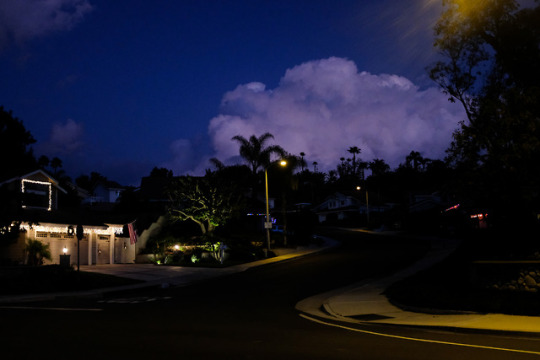
One day you finally knew
what you had to do, and began,
though the voices around you
kept shouting
their bad advice – – –
though the whole house
began to tremble
and you felt the old tug
at your ankles.
‘Mend my life!’
each voice cried.
But you didn’t stop.
You knew what you had to do,
though the wind pried
with its stiff fingers
at the very foundations – – –
though their melancholy
was terrible. It was already late
enough, and a wild night,
and the road full of fallen
branches and stones.
But little by little,
as you left their voices behind,
the stars began to burn
through the sheets of clouds,
and there was a new voice,
which you slowly
recognized as your own,
that kept you company
as you strode deeper and deeper
into the world,
determined to do
the only thing you could do – – – determined to save
the only life you could save.
The Journey by Mary Oliver
4 notes
·
View notes
Photo

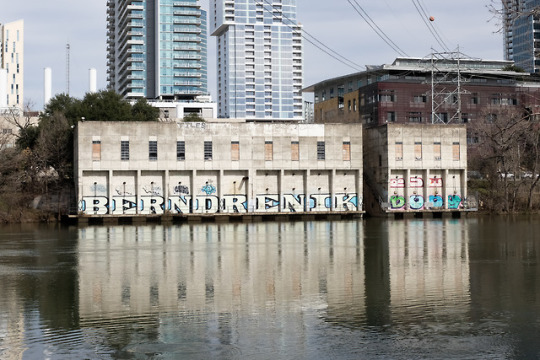
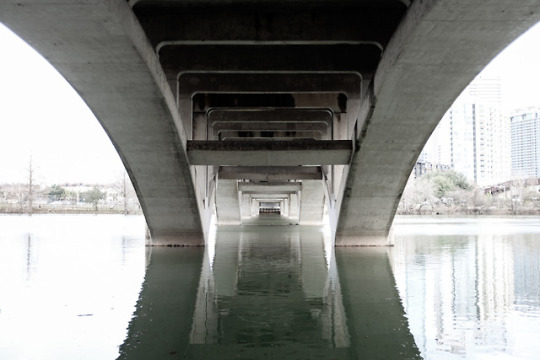

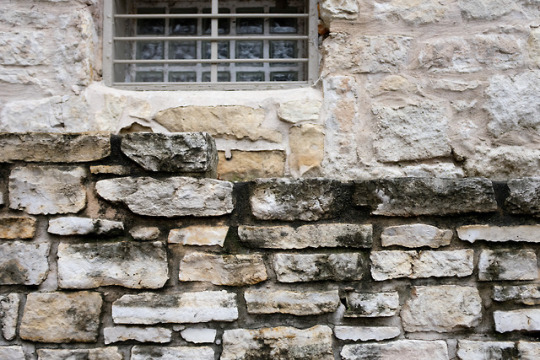




Austin, TX; January 2019
2 notes
·
View notes
Text
Kate Wagner on McMansion Hell, humor in criticism, and vernacular architecture

After a short break for the holidays, Scratching the Surface — my podcast about design criticism and practice — is back with a brand new episode with Kate Wagner. You probably know Kate’s work from the viral blog she founded in July 2016, McMansion Hell, where she roasts the world’s ugliest houses while also educating her audience about architecture, history, urban planning, and theory. She’s also written for a variety of publications about architecture and design, including The Atlantic, Architectural Digest, 99% Invisible, and Curbed.
McMansion Hell started right as I was beginning Scratching the Surface, and seemed to come from nowhere. As I was talking to people about design criticism, more and more people were asking me if I’d heard of Kate and seen McMansion Hell. In many ways, I think our goals our similar: we were both interested in writing about design and architecture but doing it in a new way, in a way that could bring more people into the conversation. Kate does this so brilliantly through humor, graphics, and a very specific voice.
But McMansion Hell is more than poking fun at America’s mansions. She also writes very throughly about architecture and the built world. One of my favorite pieces of hers, is one she wrote about a year ago called called All Buildings are Interesting. She writes:
Botanists bemoan what is called “Tree Blindness”: a phenomenon where, for most people, trees are only a green background for literally whatever else is going on. Tree Blindness keeps people from understanding the world they live in on another level, from having a personal connection to the environment. Knowing the names of the trees on my street makes each of them special and memorable. If one of them were to be lost - like the hemlock, which is being tragically eviscerated by the wooly hemlock adelgid - it would be like losing a friend, something that was a part of my world rather than an another alarming headline, lost in an endless sea of other alarming headlines.
I would say that we also suffer from building blindness, which is ostensibly not as serious as Tree Blindness, as the consequences of building blindness are much less dire. Still, being blind to buildings robs us of a deeper level of understanding and interaction with the world around us.
I wrote about this essay for the Scratching the Surface member newsletter a few months ago, noting how easy it is for me to suffer from ‘graphic design blindness’. It’s easy for us in the field — and especially those of us who talk about it — to feel like certain work is boring, isn’t worthy of criticism in some way. I know I’m guilty of that. Kate reminded me that all design — from the vernacular to the high design — is worth a closer look. All of it can teach us something.
In this episode, Kate and I talk about that: we talk about looking at our environments and how growing up in the suburbs, surrounded by ‘lowercase-a-architecture’ shaped how we see the world. We also, of course, talk about McMansion Hell — how it started, why it started, and what it was like to become an overnight sensation.
This was fun. If you don’t know Kate and McMansion Hell, I highly recommend spending some time on the site. After a short break, it’s good to be back to releasing new episodes. Happy 2019!
You can listen to the episode here, or on iTunes, Google Play, Spotify, and Soundcloud. Memberships are available for $5/month or $50/year if you want to support the show. And if you like it, please consider leaving a review on iTunes.
#kate wagner#McMansion hell#architecture#criticism#writing#blogs#tumblr#humor#scratching the surface#interview
0 notes
Photo
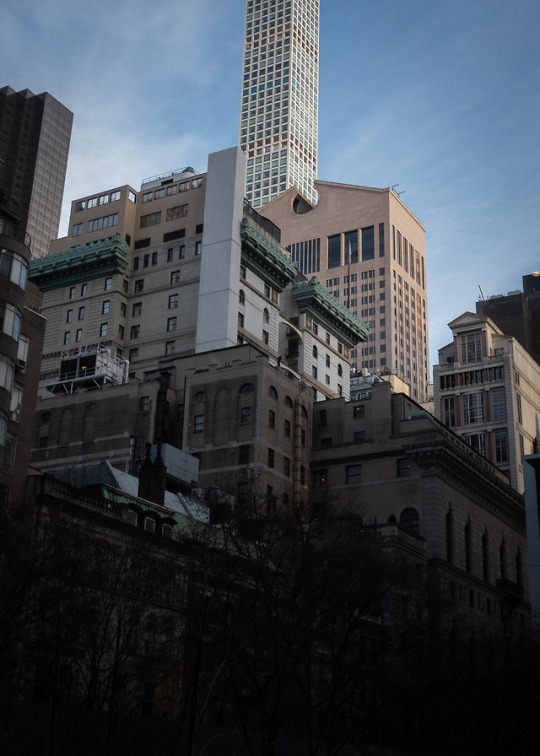
Speaking of postmodernism, I'd never thought much about Philip Johnson's famous AT&T building in New York. I didn't have a strong opinion about it — its collage of styles, its chippendale roof, its postmodern playfulness — but last month, when I stepped off the subway in midtown and saw that silly roof poking out right in front of me, I took this photo and thought, "Yeah, I kinda like it."
0 notes
Text
The Brutalist Architecture of University of California Irvine

I was in Southern California at the end of the year to spend Christmas with my wife’s family. On one especially lazy day after the holidays, we decided to visit the campus of University of California, Irvine, my wife’s alma mater. I didn’t know her in college and wanted to see where she studied undergrad, and she hadn’t been back since. I didn’t know anything about the school or campus, but when we pulled up to the main entrance, my wife turned to me and said, “Get ready for a lot of brutalism.”
And a lot of brutalism there was! What my wife didn’t tell me — and what none of us knew — UCI is home to a collection of brutalist structures designed in 1963 by William Pereira. Pereira, an amazingly prolific architect, worked out of Los Angeles, became a professor at University of California in 1949. He designed the master community plan for the entire city of Irvine, San Francisco's Transamerica Pyramid, UCSD's Geisel Library, and the original buildings of the LA County Museum of Art. He is one of the few architects to make the cover of Time Magazine.

The campus is designed around a central park — whose landscape architecture was inspired by Fredrich Law Olmstead — so no building would be more than a ten minute walk from any other. Pereira, a science fiction fan, wanted to create a modernist/futurist environment where every building related to the other, creating a unified style across the campus. "It was a bold plan at the time, and still is. Pereira wanted to create a sort of academic village in a wooded, hilly park." writes Darren Bradley, an architectural photographer, "At the time, it was a barren hillside of treeless cow pastures. Instead of flattening the hilly terrain with bulldozers, he created floating white concrete platforms suspended over the ground on pedestals, that would support the buildings and present them like individual sculptures on display in a giant museum sculpture garden.
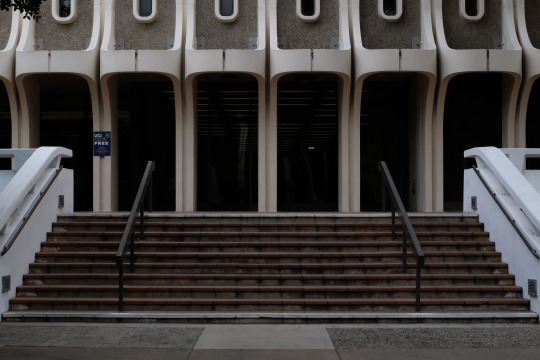






In 1977, Pereira was replaced as campus architect by David Neuman, who immediately announced that he was abandoning Pereira's careful plan. By then, modernism had fallen out of vogue and Neuman invited postmodern architects like Charles Moore, Venturi & Brown, and Robert A.M. Stern to design new buildings for the campus. After a building freeze construction resumed in the late eighties and continues today as the campus continues to grow. The new buildings attempt — at varying degrees of success — to bridge the styles of Pereira's original plan and Neuman's postmodern dreams. My favorite building of the postmodern era is probably Arthur Erickson's McGaugh Hall — a quintessential postmodern structure that sticks out like a sore thumb in the sea of concrete but is strangely charming in its environment.

Pereira's legacy on the UCI campus lives on, even if not for the modernist, utopian dream he set out to plan. The campus was featured heavily in the 1977 Conquest of the Planet of the Apes. As a science fiction fan, I can't help but think Pereira would be pleased to see his work immortalized, even if it is meant to be the architecture of an oppressive ape regime.

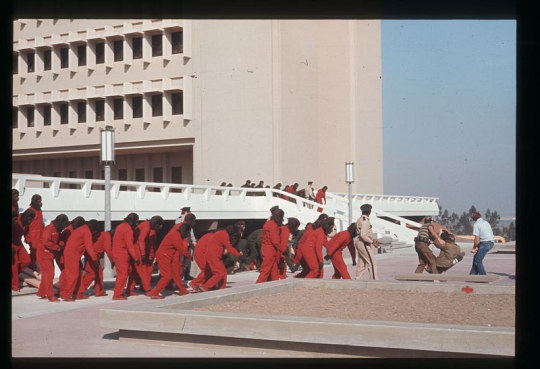
All photos my own, except for Planet of the Apes screenshots.
#university of california#irvine#architecture#campus#photography#planet of the apes#uci#william pereira#urban planning
0 notes
Text
Austin

I spent the beginning of the year on a short vacation in Austin, TX. I'd never been but it'd had been a city on my list to visit for years. In between breakfast tacos and barbecue, I was most excited to see Ellsworth Kelly's Austin, a standalone structure — a temple of light — at Austin's Blanton Museum.
Kelly, known for his color field paintings and plant drawings, designed this structure nearly thirty years ago and expected it to never be built. Thanks to generous donations and the Blanton's organization, construction began a few months before Kelly died, in 2015, at 92. M.h. Miller wrote about its history for The New York Times earlier this year, after it opened.
We visited on a rainy Wednesday, when the museum was largely quiet, and got to experience the work in solitude. The color windows cast a rainbow across the space; the rain quietly beating outside: it was, unsurprisingly, a moving experience and the highlight of my trip.


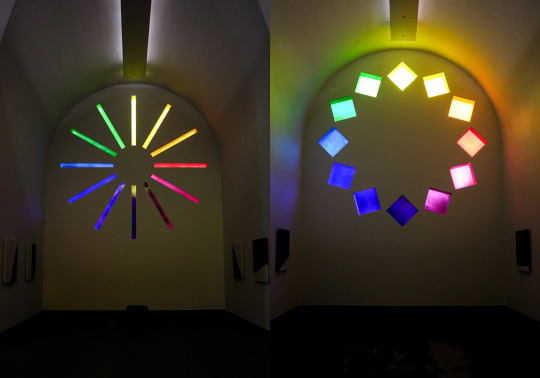

0 notes
Text
2018 Movies Watched
1/5/2018 Harry Potter and the Sorcerers Stone
1/6/2018 Harry Potter and the Chamber of Secrets
1/7/2018 Harry Potter and the Prisoner of Azkaban
1/13/2018 Phantom Thread
1/13/2018 Harry Potter and the Goblet of Fire
1/14/2018 Harry Potter and the Order of the Phoenix
1/15/2018 Harry Potter and the Half Blood Prince
1/19/2018 Harry Potter and the Deathly Hallows Part I
1/20/2018 Harry Potter and the Deathly Hallows Part 2
1/23/2018 The Visual Language of Herbert Matter
1/26/2018 A Ghost Story
1/28/2018 Get Out
1/30/2018 Kumiku, The Treasure Hunter
1/31/2018 The Founder
2/9/2018 David Bowie: The Last Five Years
2/13/2018 Standup for Drummers
2/16/2018 Wonder Woman
3/2/2018 Fast and Furious
3/3/2018 Black Panther
3/4/2018 Where The Wild Things Are
3/10/2018 Call Me By Your Name
3/11/2018 The War Room
3/12/2018 Annihilation
3/13/2018 Jackie
3/15/2018 Gerhard Richter Painting
3/17/2018 Icarus
3/18/2018 A Wrinkle in Time
3/24/2018 The Death of Stalin
3/28/2018 The Zen Diaries of Garry Shandling
3/31/2018 Isle of Dogs
3/31/2018 Atomic Blonde
4/1/2018 Fantastic Beasts and Where to Find Them
4/7/2018 The Florida Project
4/13/2018 The Cloverfield Paradox
4/13/2018 Seeing Allread
4/14/2018 Gaga: Five Foot Two
4/19/2018 Hidden Figures
4/21/2018 Carol
4/26/2018 Paterno
4/28/2018 The Rachel Divide
4/29/2018 A Quiet Place
5/3/2018 Big Time
5/10/2018 Alps
5/12/2018 Faces Places
5/13/2018 Avengers: Infinity War
5/14/2018 Brad's Status
5/15/2018 The Killing of a Sacred Deer
5/17/2018 The Fate of the Furious
5/18/2018 Ali Wong: Hard Knock Wife
5/19/2018 Guardians of the Galaxy
5/20/2018 Guardians of the Galaxy Vol. 2
5/22/2018 Dunkirk
5/23/2018 Dogtooth
5/26/2018 Secret Window
5/27/2018 Deadpool
5/28/2018 Deadpool 2
6/7/2018 Coco
6/8/2018 LBJ
6/9/2018 The Final Year
6/10/2018 Solo
6/11/2018 Tokyo Story
6/12/2018 Patty Cake$
6/14/2018 The Informant!
6/16/2018 Blade Runner 2049
6/17/2018 Ocean's 8
6/17/2018 Wonder Wheel
6/22/2018 Come Sunday
6/23/2018 Doctor Strange
6/24/2018 Hereditary
6/29/2018 Young Karl Marx
6/29/2018 Hannah Gatsby: Nanette
6/30/2018 Thor
7/2/2018 Fahrenheit 451
7/3/2018 Dick Cavett's Watergate
7/4/2018 First Reformed
7/4/2018 Thor: The Dark World
7/7/2018 Thor: Ragnarock
7/8/2018 Sorry to Bother You
7/9/2018 What We Do In the Shadows
7/11/2018 Boy
7/14/2018 The Incredibles II
7/15/2018 Eighth Grade
7/15/2018 Marvel's The Avengers
7/18/2018 The Heretic
7/22/2018 Bo Burnham: Make Happy
7/24/2018 John Mulaney: Kid Gorgeous at Radio City
7/25/2018 Chris Rock: Tambourine
7/25/2018 The Disaster Artist
7/30/2018 Chisholm '72: Unbought & Unbossed
8/4/2018 A Girl Walks Home Alone At Night
8/10/2018 Avengers: Age of Ultron
8/11/2018 Ant-Man
8/17/2018 Ex Machina
8/18/2018 Unsane
8/19/2018 Blackkklansman
8/19/2018 Steve Martin & Martin Short: A Night You Will Forget for the Rest of your Life
8/20/2018 Three Billboards Outside Ebbing, Missouri
8/21/2018 Film socialisme
8/22/2018 It
8/24/2018 Hunt for the Wilderpeople
8/25/2018 John McCain: For Whom the Bell Tolls
9/1/2018 Mission: Impossible - Fallout
9/7/2018 To All the Boys I've Loved Before
9/9/2018 Battle of the Sexes
9/14/2018 Mother!
9/16/2018 Crazy Rich Asians
9/19/2018 Robin Williams: Come Inside My Mind
9/20/2018 Loving Vincent
9/21/2018 Cargo
10/3/2018 Suburbicon
10/5/2018 The Shape of Water
10/6/2018 Private Life
10/9/2018 The Land of Steady Habits
10/10/2018 Yojimbo
10/11/2018 The Seventh Seal
10/12/2018 Landline
10/31/2018 The Strangers: Prey At Night
11/4/2018 Suspiria
11/4/2018 Lord of the Rings: The Fellowship of the Ring
11/7/2018 The Other Side of the Wind
11/9/2018 They’ll Love Me When I’m Dead
11/10/2018 Lord of the Rings: The Two Towers
11/18/2018 Lord of the Rings: Return of the King
11/23/2018 A Star is Born
11/24/2018 The Ballad of Buster Scruggs
11/25/2018 No Country For Old Men
11/29/2018 Ricky Jay and His 52 Assistants
12/2/2018 The Favourite
12/8/2018 At Eternity's Gate
12/10/2018 The Price of Everything
12/13/2018 Rams
12/14/2018 Logan's Run
12/16/2018 Roma
12/18/2018 The Post
12/20/2018 Won’t You Be My Neighbor?
12/20/2018 Happy as Lazzao
12/23/2018 Spider-Man: Into the Spider-Verse
12/29/2018 Downsizing
12/30/2018 Vice
12/29/2018 Black Mirror: Bandersnatch
12/31/2018 Taylor Swift: The Reputation Stadium Tour
0 notes
Photo

”Is that what being an artist means—selling? I thought it meant one who is always seeking without finding. I thought it meant the contrary from ‘I know it. I have found it.’ When I say I am an artist, I only mean ‘I am seeking, I am striving, I am in it with all my heart.’” —Vincent van Gogh, from Irving Stone’s biographical novel, Lust for Life
10 notes
·
View notes
Video
youtube
I begin every year listening to this song. Here we go again. Happy 2019!
1 note
·
View note
Text
Are.na’s Cab Broskoski and Chris Sherron on building a new type of social network, research as creative practice, and open source discourse

This week’s episode of Scratching the Surface — my podcast about design criticism and practice — is a little bit different than my usual conversations because this week I am talking to the co-founders Are.na, Cab Broskoski and Chris Sherron. Are.na is, in their words, “a knowledge sharing platform that combines the creative back-and-forth of social media with the focus of a productivity tool.” Are.na has become indispensable to my own workflow and I was curious to talk to Cab and Chris about how they think about the site and building a platform for a diverse group of artists, designers, and researchers.
I was skeptical of Are.na when people first started telling me to sign up. I’d seen countless bookmarking sites come and go over the years and had invested fairly heavily into Evernote to catalog and organize my brain. Even after I signed up, I wasn’t sure how it fit into my life but after a few weeks playing around, it quietly became central to my work, whether its personal research or organizing readings for classes. Like Evernote, Are.na is flexible. It’s open and lets you use it the way you want to, never forcing you to think like them or change your own workflow. But unlike Evernote (or Pinterest or the variety of other services that do similar things), Are.na strips away everything else, putting the focus on content, on research, and on sharing.
This was of thinking is embedded into the company’s ethos. All of the founders come from art and design backgrounds — Cab was a digital artist and Chris a designer — and Are.na began as a service for themselves. What they’ve built is not only a bookmarking site, but also a research platform and community that believes in sharing knowledge and open source ideologies.
In this episode, Cab, Chris, and I talk about the origins of the site and how their own backgrounds and interests influences the design and development of the site. We also talk about research as a creative practice, open source knowledge, and how they want to create a slower space on the internet that goes against our preconceived notions of what a social network is and can be.
As I say in the conversation, Are.na has become central to my work. It’s where I store my references and begin new projects. Where I once would look at Twitter or Instagram to kill time while waiting for the Subway or in line at the grocery store, I now find myself looking at Are.na, seeing what others are saving and finding new things to read and think about. If you’re not on Are.na, I highly recommend you give it a try. You can follow me here and I’d love to see what you are saving and how you are using it. And whether you use it or not, I hope you’ll enjoy this episode.
You can listen to the episode here, or on iTunes, Google Play, Spotify and Soundcloud. Memberships are available for $5/month — or for the month of December just $40/year — if you want to support the show. And if you like it, please consider leaving a review on iTunes.
0 notes